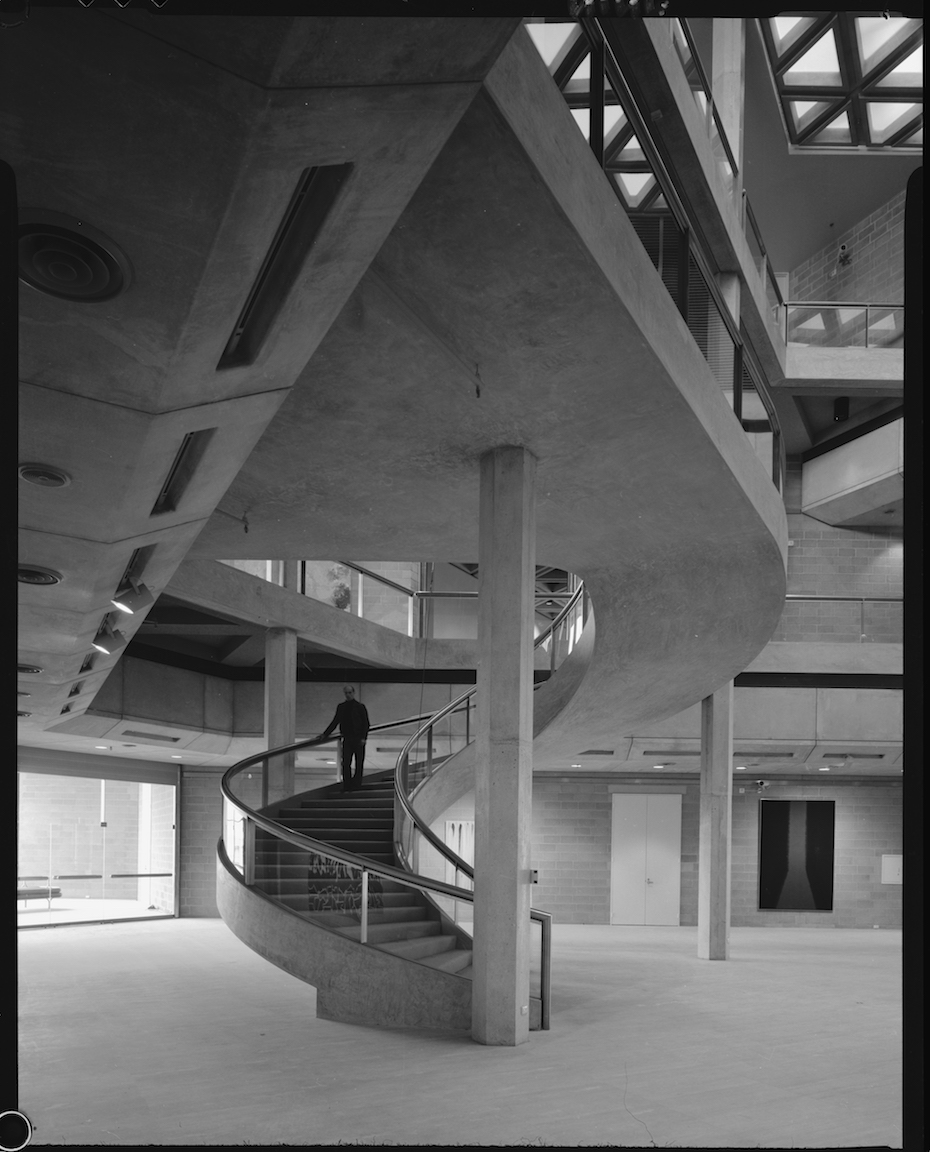Stark, cold and uninviting. This is what Brutalist structures are known for. Walking along the streets of Perth, you know you’ve come across a Brutalist building when it’s hulking exterior protrudes from the grey pavement in large slabs of reinforced concrete. It’s modular formation and raw display of functional modern materials; such as steel, glass and concrete, imbue a heroic presence and utalitarian feel.
With the devastating impact of the Second World War, there was an urgent need for inexpensive construction in Europe. Along with the development of new materials and construction methods, architectural practitioners embraced the opportunity to start from scratch and cultivate a modern style. Wanting to move away from traditional aesthetics, which valued meaningless embellishments, these modernists reacted with a desire to strip buildings down to their basic elements. Alexander Clement, in his Brutalism, notes that to these architects, “the notion of dressing up a factory or an office block to look like a Greek temple or Venetian Renaissance palazzo was an absolute absurdity.”
Despite being known for its stern and angular stature, its name actually came from the French term for raw concrete; ‘béton brut’. Developing within the framework of Modernism, Brutalism became an architectural style in its own right in the middle of the 20th century. Le Corbusier’s apartments built in Marseilles, Unité d’Habitation, are widely recognised as the starting point at which this occurred. Completed in 1952, the structure was stripped down to its basic elements and adorned with a concrete exterior. This towering building laid the groundwork for future Brutalist projects, and inspired the ensuing ‘International Style’.

This style took hold of the world, and developed particularly in Britain and Eastern European Communist states as a way of establishing a national socialist architecture. It entered the Australian urban landscape in the 1960s, taking heed from Britain and influenced through the influx of skilled European migrants, who the government welcomed in a bid to ‘populate or perish’, following the Second World War.
Many architects who immigrated, including the designer of the Art Gallery of Western Australia (AGWA) building, Charles Sierakowski, influenced Perth’s built forms through their international training and experiences. Born in Poland, Sierakowski underwent his architectural education in London and Accra, and immigrated to Australia in the 1970s. His design of the AGWA building evidently combined the Modern British architectural movement with his sensitivity to the function of the space.
It stands comfortingly over passers-by as a gatekeeper to the cultural hub of Perth. Every day, the Perth Cultural Centre buzzes with people as diverse as the city itself; children chase the local pigeons, professionals’ heels swiftly click on the pavement, and old men stop to teach you some Italian and tell you stories about Rudolph Valentino. As you enter the building through the large glass sliding doors, the warmth of the building’s air conditioning embraces you. It is the only thing which is warm about this building. Your eyes take some time to blink out the bright sunlight and adjust to the cool concrete interior. A resounding solid piece of concrete swirls in the tremendous open centre of the Gallery, with steps carved out to lead you to the floors above. In this building, structural concrete pillars are a feature throughout.

Today, Brutalist structures feel retro-futuristic: they walk the line between old, run down, miserable spaces, and projections designed for a future reality. These buildings are difficult to maintain; concrete doesn’t age well and water stains begin to appear before long. Peaking in the 1970s, Brutalism fell out of favour within the same decade. They became a physical representation of economic hardship and urban decay, beginning to be seen as bad taste in architecture.
In many cases, Brutalism disobeyed architectural codes by rejecting public opinion and consideration of the community affected by its built forms. The style was rarely applied with concession to its location and cultural context. While its pure and honest philosophy is enticing, it rarely translates well into a building you actually want to see on the street daily. Brutalism only truly works when its philosophy and resulting aesthetic expression leaves space to embrace the history, culture and community of the place. And frankly, most of the time that means it doesn’t work at all. The AGWA building, however, is an exception, precisely because of Sierakowski’s sensitivity regarding the local context in which the building exists. Forty years on from its construction, the AGWA building stands as an example of success within Brutalism, and architecture more broadly.
Words by Riva-Jean Lander
Cover Image Credit:
Fritz Kos
Art Gallery of Western Australia 1979
State Library of Western Australia
Sourced from the collections of the State Library
of Western Australia and reproduced with the
permission of the Library Board of Western
Australia

